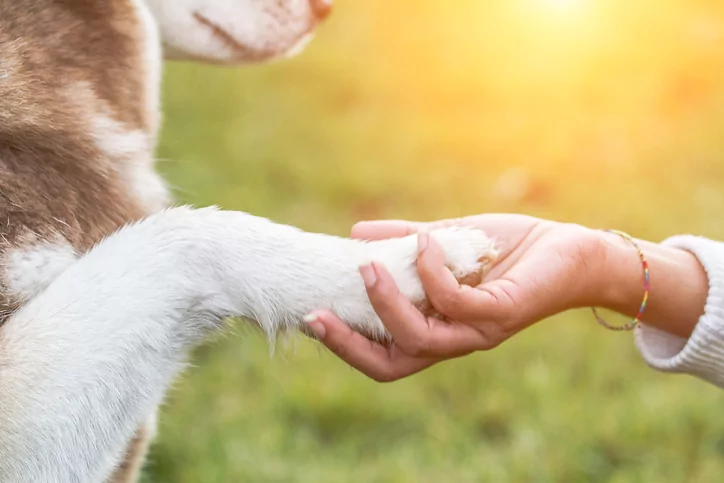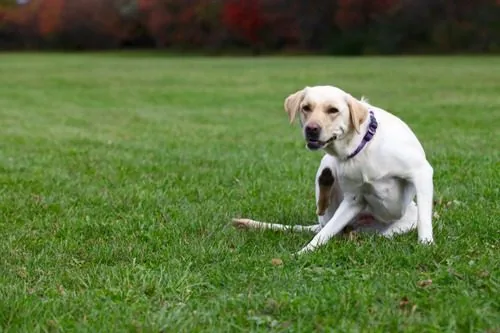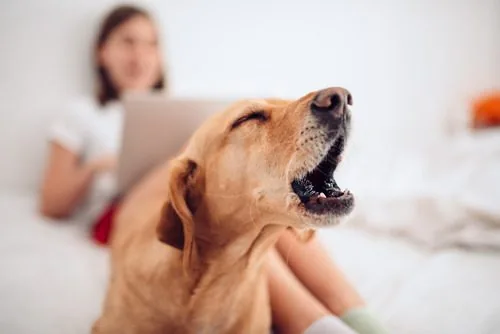Dog Paw Pad Injuries: How to Protect Your Dog From Them
A dog needs their paws to be in good condition, free from burns or wounds that can cause pain or discomfort. Unfortunately, paw pad injuries occur in dogs often, and you should be aware of these injuries so you can better help your dog. In this paper you will discover the most frequent paw pad injuries and how to protect your dog from them.

Common Paw Pad Injuries
Dog paw problems are common, especially in hot or cold weather. Your pup can also run into troubles when they have nail problems. There are so many basic functions of your pup’s paws:
- They provide traction
- They help with balance
- They help slow down and stop
- They act as shock absorbers for the bones and joints
Unfortunately, dogs can get paw injuries that can be painful or debilitating. You should regularly check your pup’s paws to ensure they are not injured. The following includes some of the common paw pad injuries:
Burned or Blistered Paws
Before you let your dog walk on the hot pavement, put your hand on it for ten seconds. If it is too scorching for you, it is the same for your canine. If your pup has burns or blisters on their paw, it will look red and feel hot. Some of the indications of a paw pad burn:
- Limping
- Refusing to walk
- Excessive licking of the paw
- Part of the paw pad is missing
- Red, ulcerated, bleeding paw pad
Paw pad burns are not just a hallmark of summer dog walking but also a winter problem. Even a first-degree burn must be handled by your veterinarian. You want to ensure your pup’s paws do not get infected.
Cuts and Lesions
It is no mystery that dogs love to run around freely and play, and you should always encourage that. However, dogs can get broken glass or stones stuck in their paw, causing a cut or lesion. You can help protect your pup’s paws with cute dog booties. Booties will keep paws from getting injured.
Nail Problems
There can be several problems with your pup’s nails, which can cause extreme discomfort and injury. Make sure to trim your dog’s nails about every three to four weeks to help prevent injury. Some of the common issues that can transpire with your pup’s nails:
Long Toenails
If you overhear your pup’s toenails clacking on the floor, they are too long. Nails can also get trapped in blankets or carpeting, causing them to pull and cause discomfort. Long nails encumber your pup’s ability to walk. It can be painful for your pup and may even cause strain and pain in the muscles and ligaments in their legs. Long nails are also susceptible to the following:
- Tearing
- Splitting
- Chipping
- Breaking
Long nails may also lead to deformed feet and other injuries. Your dogs’ nails should only be long enough to extend past the quick so you can see them, but they should stay within the paw. Anything longer, you run the risk of your pup becoming injured. If the nails curve, it causes your dog to stand incorrectly, which leads to pain.
Torn Nails
Nails can become torn when they get caught on something. A bleeding or fractured toenail can lead to blood loss or an illness. Your pup may even tear their nails if they land on their feet wrong, and it can also cause them to limp. Torn nails can rip past them quickly, triggering extreme pain. The quick is connected to the bone, and an infection may occur if the quick has been injured.
Ingrown Nails
Ingrown nails can be agonizing and injure the skin if the nail pokes into it. This situation can occur if you fail to trim your dogs’ nails regularly, and they end up curling back into the footpad. Ingrown nails can cause severe discomfort and even lameness. Cutting an ingrown toenail on your pup can be difficult and painful for them. It may be a task you choose to save for your veterinarian.
Dry Cracked Paws
Dry, cracked paws can be extremely painful for your pup. Taking your canine for a walk in the freezing cold winter can be detrimental to their paws. It can trigger them to become dry and split open, injuring your canine’s paws. Dry paw pads are also at risk for infection due to the excessive licking and chewing of the area. Some of the causes of dry, cracked paws:
- Food allergies
- Wear and tear
- Hyperkeratosis
- Mineral deficiency
- Chemicals and cleaners
Fortunately, you can help heal dry, cracked paws. Paw balm keeps paws in good condition and creates a barrier between your dog’s paws and the elements. You can utilize it in hot or cold conditions.
Fungal and Bacterial Infections
A fungal or bacterial infection can sometimes overpopulate your dog’s paw pads, causing an infection that leads to inflammation and considerable discomfort. Some of the signs your pup has a fungal or bacterial infection:
- Itching
- Redness
- Swelling
- Drainage
Yeast corruptions and ringworm are the most frequent types of infection on your pup’s feet. If your dog has a yeast disorder on their paw, it may be accompanied by a brown discharge and could even have a foul odor.
Parasites
Dogs get ticks easily just from being outside. You may even find ticks embedded in your pup’s paw pads. If the ticks take residence on your pup’s foot for too long, it can lead to health issues like Lyme disease. This is why checking your dog for ticks whenever they come in from outside is so important.
You want to use tweezers to get the tick out. As the Humane Society specifies, you want to “seize the tick as close to your dog’s skin without pinching your pup. Then, pull it out with a straight and steady motion.” Make certain you do not leave any sections of the tick. Get it all out in one motion.
Cysts and Growths
Cysts can develop on your dog’s paw and appear as red bumps. They can make walking extremely painful for your pup. Some breeds are more prone to cysts. Sometimes allergies can cause cysts, as dogs can have environmental allergies to things in nature, like:
- Trees
- Grass
- Weeds
- Pollen
Dogs can also be allergic to things found in the home, like dust or mold. If your pup has a cyst or growth, you may see them limping on one foot, or they may avoid you touching their paws. If your dog has a cyst, take them to the vet.
Seek Veterinary Care if Your Dog Has a Paw Pad Injury
Paw pad injuries are common in dogs, but there are things you can do for your pup to ensure that their paws are kept healthy and in good condition. If your dog’s paws look injured or your canine appears to have pain, do not hesitate to take them to the vet. Contact The Village Vets by calling one of our locations. Our compassionate veterinarians will always be there for you and your pet!
Recent Posts
About The Village Vets
The Village Vets is a network of animal hospitals based in Atlanta, GA and the surrounding area. We offer honest, excellent service to our clients in a comfortable, friendly atmosphere. To learn more about our locations and how we can better serve you and your pet, click the button below.
Share This Post
Recent Posts
About The Village Vets
The Village Vets is a network of animal hospitals based in Atlanta, GA and the surrounding area. We offer honest, excellent service to our clients in a comfortable, friendly atmosphere. To learn more about our locations and how we can better serve you and your pet, click the button below.



